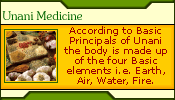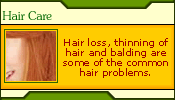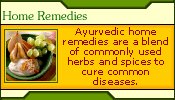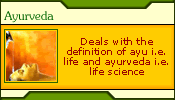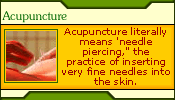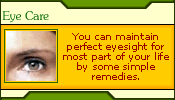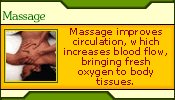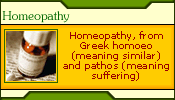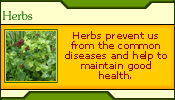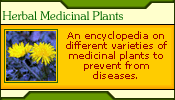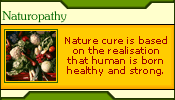|
Iron is an important mineral which enters into the vital activity
of the blood and glands. Iron exists chiefly as haemoglobin in the
blood. It distributes the oxygen inhaled into the lungs to all the
cells. It is the master mineral which creates warms, vitality and
stamina. It is required for the healthy complexion and for building
up resistance in the body.
The chief sources of iron are grapes, raisins, spinach, all green
vegetables, whole grain, cereals, dried beans, dark coloured fruits,
beets, dates, liver and egg yolk. The Indian Council of Medical
Research has recommended an allowance of 20 to 30 mg. of iron in
a balanced diet for an adult. Iron deficiency is generally caused
by severe blood loss, malnutrition , infecttions and by excessive
use of drugs and chemicals. Deficiency of dietary iron may cause
nutritional-anaemia, lowered resistance to disease, a general run
down condition, pale complexion, shortness of breath on manual exertion
and loss of interest in sex.
Iron is the classic remedy for anaemia. However, there are several
forms of anaemia, and iron deficiency anaemia is only one. If one
is taking iron pills due to insufficient intake of iron in the normal
diet, one should also take atleast 40 mg. of folic acid or folate
every day, alongwith 10 to 25 mg. of vitamin B12. Both these vitamins
are essential in building healthy blood cells.
Iron is an essential element carrying oxygen, forming part of the
oxygen-carrying proteins - hemoglobin in red blood cells and myoglobin
in muscles. It is also a component of various enzymes and is concentrated
in bone marrow, liver, and spleen.
Iron is required for
The production of hemoglobin and myoglobin (the form of hemoglobin
found in muscle tissue) requires this nutrient.
It is also needed for the oxygenation of red blood cells, a healthy
immune system and for energy production.
Deficiency of iron
Severe iron deficiency results in anemia, and red blood cells that
have a low hemoglobin concentration. Anemia in pregnancy increases
the risk of having a premature baby or a baby with low birth weight.
In young children, iron deficiency can manifest in behavioral abnormalities
(including reduced attention), reduced cognitive performance and
slow growth. In adults, severe iron deficiency anemia impairs physical
work capacity.
Symptoms of iron deficiency may include fatigue, poor stamina,
intestinal bleeding, excessive menstrual bleeding, nervousness,
heart palpitations and shortness of breath. It may also cause your
mouth corners to crack, brittle hair, difficulty in swallowing,
digestive disturbances and spoon shaped nails with ridges running
lengthwise.
Dosage
The dosage is the Recommended Daily Allowance (RDA), but be aware
that this dosage is the minimum that you require per day, to ward
off serious deficiency of this particular nutrient. In the therapeutic
use of this nutrient, the dosage is usually increased considerably,
but the toxicity level must be kept in mind.
In the case of microelements, such as trace elements, the amounts
are very small, yet they are still important.
The indicated dosage for males is 10 mg per day, and 18 mg per
day for females.
Toxicity and symptoms of high intake
High iron content in the body has been linked to cancer and heart
disease.
People of European origin, sometimes have a genetic abnormality
for storing excessive iron (1:300) where ten percent of these populations
carry a gene for hemochromatosis. Iron supplements are the leading
cause of death in children - so keep the supplements out of the
reach of children.
A fatal dose for children could be as little as 600 milligrams.
Iron can be poisonous and if too much is taken over a long period
could result in liver and heart damage, diabetes and skin changes.
Large iron supplementation may also contribute to the hardening
of arteries, heart disease and reducing zinc absorption.
Best used with
Iron should be taken between meals with Vitamin C, while manganese,
copper, molybdenum, vitamin A and the B group are also beneficial.
Iron in a supplement should be almost balanced with zinc.
When more may be required
Iron absorption is negatively affected when oxalic acid - found
in spinach, Swiss chard, tea, coffee soy and some pulses. Antacid
medication, coffee and tea drinkers at mealtimes, people on calorie
restricted diets and women with a heavy flow during menstruation
may require more iron.
Enemy of iron
Try to cut out tea and coffee at mealtimes. Iron supplements should
not be taken together with calcium, zinc or vitamin E if in the
form of ferrous sulfate.
Other interesting points
Some research being conducted is to test the possibility of high
iron stores in the body being responsible for an increased risk
to chronic diseases, such as cancer and heart disease, through oxidative
mechanisms.
Food sources of iron
Heme iron (present in red blood cells and muscles) found in meat,
poultry and fish - is readily absorbed; Non-heme iron - with the
absorption more influenced by other dietary factors, are present
in cereals, fruits, grains, beans and vegetables.
|



